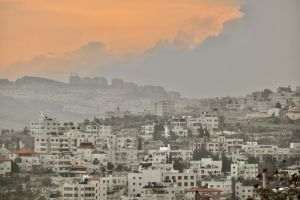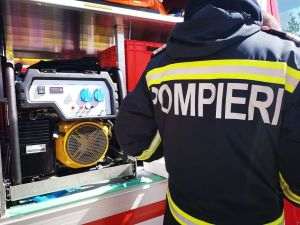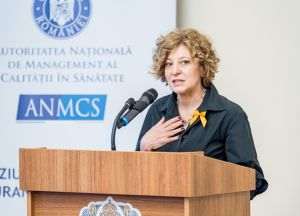In the last twenty years, we have become accustomed to consider that Black Sea tourism only means the Romanian and Bulgarian coasts, the latter flooded with attractive all-inclusive or ultra all-inclusive offers.
In reality, tourism is not just lying on the beach in the sun and diving into the sea. Tourism is a cultural interconnection between vacationers and the places they visit.
For those who have the desire to discover new things, to know what they don't know yet, to experience new sensations and to taste the flavors of the places they visit, Paphlagonia - the Turkish area in the south of the Black Sea, located in northern Anatolia , can offer them what they are looking for: places where the monuments of Byzantine antiquity merge with the present, flavors they have never encountered before, gorgeous landscapes and refined gastronomy, where the traditional is reinterpreted in a way that does not alter the essence or the taste.
The road of Romanian tourists to Paphlagonia necessarily passes through Istanbul, the city located on two continents - Europe and Asia -, the old capital of the Eastern Roman Empire and the Ottoman Empire, which perfectly combines its contemporary culture with ancient traditions.

With its beautiful historical landmarks, outstanding cuisine, vibrant nightlife, art and music festivals, mazes of markets and shopping galleries, Istanbul is "the city that never sleeps", as our guide Hazal Aydoğan told us.
In Istanbul, tourists can spend a wonderful day in the Galata area or go shopping on the long but smooth road to Taksim Square, one of the most famous squares in Turkey, due to the pro-democracy rallies that have been held there since throughout the last decades.
However, in order to reach Paphlagonia, for an east-west tourist circuit, you fly from Istanbul to Samsun, one of the largest cities in the Turkish Black Sea region.
Hazal Aydoğan told us: "The whole region, starting from Rize, passing through Trabzon and Samsun, is known for black tea crops. The best tea is the one picked in the spring, in May. Another activity specific to the Black Sea area is fishing. Because of the rocky area, there are very few places to sunbathe between Samsun and Zonguldak, but nevertheless tourism is increasing based on a UNESCO project that highlights the historical remains of this region known in ancient times as Paphlagonia. Moreover, the area is rich from a culinary point of view, among the specialties are meatballs, corn bread, fish and muhlama. Chefs from Ankara and Istanbul and other big cities of Turkey come to this area where they find old, traditional recipes, which they then reinterpret, but keeping the simple, original taste."
• Foray into history
The region of Paphlagonia, known as the "Land of the Iron Horses", is a place that has been inhabited since ancient times, with archaeological research revealing that people have lived in this area since more than 4000 years ago. According to Homer, Paphlagonia was one of the oldest settlements on earth, and the Paphlagonians were one of the oldest peoples of Anatolia. Paphlagonia came under the rule of Lydia and Persia and submitted to Alexander the Great. Although it enjoyed some degree of autonomy in the later period, Paphlagonia was gradually integrated into the expanding Pontic kingdom throughout the 3rd and 2nd centuries BC. After the fall of the Pontic kingdom, it became part of Roman Bithynia. It was then incorporated into the Roman province of Galatia. After the division of the Roman Empire into two parts - west and east (Byzantine) in the 4th century AD, Paphlagonia emerged as an individual Roman province.
Paphlagonia comprises the present-day provinces of Kastamonu, Sinop, Bartin, Çankiri and Karabuk, as well as parts of Çorum, Bolu, Zonguldak and Samsun. Practically, the historical region of Paphlagonia starts from the town of Bafra, as soon as you cross the bridge over the river Halys or Halus.
The capital of Paphlagonia was the ancient city of Pompeiopolis, which is currently located in Taşköpru district of Kastamonu province. Founded by the Roman general Pompey the Great in 64/63 BC, Pompeiipolis covered almost 3 square kilometers and its walls housed over 80,000 inhabitants. The center of the city was located near an Acropolis-type structure and was equipped with a theater where art festivals and sports competitions were held, as evidenced by the information written in antiquity on the various monuments brought to light by archaeologists in the last 20 years. Moreover, the excavations in the area have partially revealed the lines of the walls of fortifications from late antiquity, public baths, squares, villas and other remains of buildings.
Taşköpru, the nearby town, located 45 kilometers from Kastamonu, is named after the bridge over the Gökirmak river, a bridge that was built in 1336, after the previous bridge, dating from the pre-Roman period, was destroyed. The bridge has seven arches and is 68 meters long. In Taşköpru, you can walk among the traditional wooden houses, visit the Pompepolis ancient city and museum, and taste the Kuyu Kebab, which is unique compared to other districts in the city of Kastamonu. At the entrance to the city, there is a monument dedicated to garlic, a plant that is grown in abundance in this area.
• Kastamonu-the foundation of Manuel I Comnenus

Located in the western Black Sea region of Turkey, Kastamonu is a wonderful city that embraces all shades of green and blue and will give you the impression of its ancient culture at every step you take. The mansions are an example of civil aesthetic architecture; inns, mosques and social complexes bear the traces of their historical past, which is the ultimate proof of how the city has preserved its cultural identity. Kastamonu is a rich destination that offers many experiences to explore, from delicious local cuisine with a rich cultural heritage, valleys, canyons and waterfalls, which were all formed by the Kure and Ilgaz Mountains.
The city was built around the Kastamonu fortress, from which it took its name, a fortress that was built by the Byzantine emperor Manuel I Comnenus in the 12th century AD. Incidentally, Kastamonu means Comnen's castle.
Only the inner part of the original structure (the inner castle) has survived to this day. The citadel is the best observation point of the entire area, as it is 120 meters above the city.
In the Kastamonu area, there are also tombs dug into the rock - the Houses of Evkaya - which date from the Phrygian period, i.e. before the 7th century BC. The site contains eight rock-cut tombs, three of which are actual funerary monuments. One of the latter - the Evkaya tomb - contains an image of "Potnea Theron" - "Queen of Animals". According to archaeologists, the tombs were built as an open-air cult site rather than rock tombs.

Another important tourist attraction in the Kastamonu area is the Mahmut Bey mosque, located in the village of Kasaba, 18 kilometers away from the Comenilor foundation. The mosque is known as "Çivisiz Cami" because it was built without using any nails or any other metal elements. The mosque was commissioned by Emir Mahmut Bey in 1366, and the unique technique used in its construction consisted of joining wooden pieces like Lego elements.
• The monastic center of Anatolian Adrianopolis

From Kastamonu, the Paphlagonia tourist road continues into the Karabuk region (named after the largest city in the area), which
it is located on the western extension of the Northern Anatolian Mountains (Pontic Mountains). The canyons of Karabuk occupy a special place among its natural beauties. Other outstanding elements of Karabuk are its caves and forests. With 68.8% of the forest area, it ranks first in Turkey. Its deep canyons, historic houses, caves and forests make Karabuk one of the most famous cities in the western Black Sea region. Home to the Hittite, Eastern Roman, Seljuk and Ottoman civilizations, the city has a history of over 5000 years.
In the region, in the town of Eskipazar, are the ruins of the ancient city of Hadrianopolis (Adrianopolis), whose beginnings date back to the early Hittite period. Built in honor of Emperor Hadrian, the ancient citadel represented a real commercial and spiritual center of Anatolia, even during the period when the area was occupied by the Ottoman Empire. In the almost 30 years of archaeological research, Turkish scientists managed to unearth only a small part of the vast metropolis: the walls of the fortress, a Roman villa and the monastic center from the early period of Byzantine Christianity, a center made up of a large church and two smaller churches, one of which had a baptistery next to it. The mosaics in the large church and in the small churches are impressive, one of them having the symbolism of two of the holy apostles.
We mention that Saint Stelian, the protector of children, who is celebrated in the Orthodox church on November 26 and who is also known as Saint Stelian the Paphlagon, was born, lived and was martyred in Anatolian Adrianopolis. In the Christian-Orthodox world, many children's hospitals bear the name of Saint Stelian, a name that was also adopted by some educational institutions.
The whole of Adrianopolis breathes history, culture and spirituality, but it will take decades for the ancient metropolis - which stretches over several square kilometers - to be fully revealed to become a major attraction for tourists from around the world .
• Safranbolu - the white city ofUNESCO heritage

The most important tourist attraction in the Karabuk region, the city of Safranbolu has been under conservation since 1975 and entered the UNESCO World Heritage List in 1994. The city's name comes from the saffron that grows in the region. With the most outstanding examples of Ottoman architecture, Safranbolu is considered one of the common treasures of humanity. The castle, hamams (Turkish baths), bazaars, inns, mosques, the old government house and its unique architectural and civil buildings are significant places of interest for visitors to Safranbolu.
The oldest building in Safranbolu is a mosque built in 1196, a place of worship that is still functional. The second oldest building in Safranbolu is a public bath - hammam - which was built 800 years ago. Several traditional houses have been converted into museums, showing aspects of everyday family life in the Ottoman Empire.
There are 1200 buildings in the city that are between 500 and 800 years old. All buildings are painted white. 80% of 1000 historical buildings are inhabited, over 15% are turned into guesthouses or hotels, and the remaining 5% are abandoned. 200 of the old buildings have been converted into shops or restaurants. The town has 103 public wells, 33 mosques, 23 bridges, 14 rock tombs, 12 public baths, 6 cemeteries and 5 archaeological sites. Through Safranbolu passes the river Gunes (Argint), which formed a real canyon in the rock layer over the millennia.
In the park in the immediate vicinity of the local museum - the former town hall - several miniature public clocks are exhibited, clocks that are, in impressive sizes, in the cities of Paphlagonia.
To make a complete walking tour of the city, tourists would need two days, but if they want a quick tour of one and a half hours, they can call on the guides in the area, who offer them a tour by means of minicars electric trains with stops at the main tourist attractions in Safranbolu.
Most products sold in the city contain saffron: saffron coffee, saffron tea, saffron soap, saffron shit, or saffron halva. Safranbolulokumu (Safranbolu shit) is a delicacy produced in various flavors such as coconut, hazelnut, double roasted pistachio, saffron, rose and mastic gum. Compared to other shit specialties, Safranbolulokum is less sweet and lighter. Another dessert in the city is Safranboluhelvasi, which is a halva made from tahini (ground sesame) and which has different specialties at each producer in the area.
Also in Safranbolu you can eat zerde - saffron pudding - dessert made with rice, saffron water, sugar and seedless grapes. All the ingredients of this dessert are boiled until the pudding thickens.
In shops in the city, in addition to saffron essences, tourists can also buy the dried flowers of this plant. The price of a jar varies depending on the weight, between 100 and 500 Turkish lira. 100 grams of dried saffron flowers costs 500 lira, approximately 17 euros, i.e. 85 lei.
• Amasra - the unpicked apple of the Black Sea
The tourist journey of Paphlagonia continues in the Bartin region, inhabited for over 3000 years according to the historical remains discovered in the ancient fortresses of Sesamos (Amasra), Kromna (Kurucaşile) and Erythinoi (Çakraz).
The Parthenios River (Bartin Çayi) forms a natural border between the ancient regions of Paphlagonia and Bithynia. Ancient historians mention Parthenopolis, today's city of Bartin, as a significant settlement on the banks of the river. The city center is surrounded by water on three sides, making the region Turkey's only river port and the only city with three rivers flowing through it. Social elements such as the ship throwing ceremony, folk costumes, hand embroidery, wire breaking, weaving, wood carving, ship building, stone slab making, local cuisine, local events and festivals are central to the cultural life of Bartin.
One of the most fascinating towns in the Bartin region is Amasra, named by Mohammed II, the conqueror of Constantinople, as the unpicked apple of the Black Sea. After experiencing a prosperous historical period in antiquity, especially after its conquest by Alexander the Great, the fortress of Amasra, named after Queen Amastris - the wife of the Macedonian general Lysimachus, was conquered by Sultan Mohammed II in 1460. Impressed because of the beauty of the city, Sultan Mohammed II called it "Çeşm-iCihan" - The dearest in the world.
The historical course of the city of Amasra can be known by visiting the local museum, where there are archaeological remains from the periods
the Hellenistic, Roman, Byzantine, Genoese and Ottoman periods.
4 kilometers away from the city of Amasra, on a road that passes by a military unit, there is a rock-cut monument that was commissioned by Gaius JuliusAquila in the name of the Roman emperor Tiberius Claudius Caesar Augustus Germanicus. The monument was built between AD 41 and 54. Known to be the only one in Anatolia, the monument consists of a headless sculpture with human figures carved into the rocks, a Roman eagle symbolizing sovereignty, and two inscriptions. The inscriptions read: "Gaius Julius broke Mount Aquila and built this resting place with his private funds in the name of interstate peace, friendship and the memory of the sovereign emperor Germanicus."
• Zonguldak - in the footsteps of Hercules and Saint Nicholas

The tourist circuit of Paphlagonia ends in the Zonguldak region, an area that has been inhabited since the Phrygian period and that was under the domination of the Persian Empire until it was conquered by the armies led by Alexander the Macedon, in 334 BC. Domination over the region has been hotly contested throughout history because of the commercial ports located in Zonguldak. Thus, although the city was occupied by the Macedonians, following a revolt of the locals, the citadel was liberated and gained a wide autonomy within the Kingdom of Bithynia, until after 1460 when it was conquered by the Ottoman Empire after the fall of the Amasra citadel.
In the area is the town of Filyos, which was known in antiquity as Tios, Tieion, Tianon or Tium. According to legend, the city was founded in the 7th century BC by Greek colonists. It could not gain political power in the shadow of Ereğli and Amasra and was burned and looted in 70 BC. during the Roman period. It was later rebuilt and served as a trading and fishing town.
Tios became a prominent religious center in the 5th century during the Byzantine period, but lost its importance during the Seljuk and Ottoman periods (14th-15th centuries) and eventually reverted to a small fishing village . Tios Citadel is located on a promontory overlooking the sea.
University professor Şahin Yildirim, head of the Department of Archeology at the University of Batin told us: "Tios Citadel was an important cultural and religious center. In its center, after the restoration started in 2003, the ruins of a temple - Acropolis - from the Hellenistic period were discovered. Next to it, after the region became the place where the Christian religion first developed, a small church was built. To the east of the castle hill, marble columns and pedestals, marble inscription slabs, stone sarcophagi and brick tombs were excavated. The Tios fortress was a recognized commercial center in the Black Sea area, being twinned with the Tomis fortress - today's city of Constanţa. The intercultural connections between the two areas can be seen in the historical vestiges discovered. Thus, if at the museum in Amasra there is a decapitated Glykon snake carved in stone, at the museum in Constanţa, Romania, I was impressed to see the entire statue of Glykon carved in marble. There appears to have been a cult of Glykon throughout the Black Sea region."
It seems, however, that the history of this land is much older, related to the time immemorial described in the legends of Olympus. Thus, in the Ereğli district, in the former Acheron valley, there are the Cehennemağzi caves. It is about three caves that have been used over the millennia.
The first is organized into two sections. The floor of the first section is laid with original plant mosaics and geometric motifs. Also there is a pedestal on which the legend says that the body of Saint Hierarch Nicholas was placed in the first phase, for eternal rest. On the eastern wall of the second section is a small apse. Scientists in Turkey claim that this grotto is a very old Christian church that was used as a secret place of worship in the early years of the spread of Christianity.
The second cave is known locally as Koca Yusuf Cave. The cave is accessed via a three-step vertical staircase and continues 1.5 kilometers deeper into the mountain. Legend has it that the twelfth and most difficult trial of Heracles (Hercules) assigned by King Eurystheus took place here: the capture of Cerberus, the dog of Hades, from the underworld, from which no mortal has ever returned. According to local legend, Heracles, with the Argonauts in search of the Golden Fleece, reached Ereğli and brought Cerberus to the surface with the help of Hermes and Athena. However, upon seeing Cerberus, Eurystheus was horrified and asked Heracles to send the creature to the underworld. The location where Heracles descended into the underworld to capture Cerberus would be, according to local legends, the Cehennemağzi Caves.
The third cave is the largest in area. Its floor is covered with underground water. Made by human hands, this cave served as a cistern that supplied water to the first and second caves. The legend also says that the water from this cave would have been given to the first Christians who came to this area in antiquity.
The Zonguldak area is also known as the main mining area of Turkey, and tourists can visit the mining museum located in the center of Zonguldak. The museum complex has a multipurpose hall, an exhibition hall and a canteen, where information about the museum is provided. The museum also has a training center with an underground opening of about one kilometer, where all the mining units can be viewed, except for the underground lake.

.jpg?27191808)
.jpg?27191808)
.jpg?27191808)
.jpg?27191808)















































